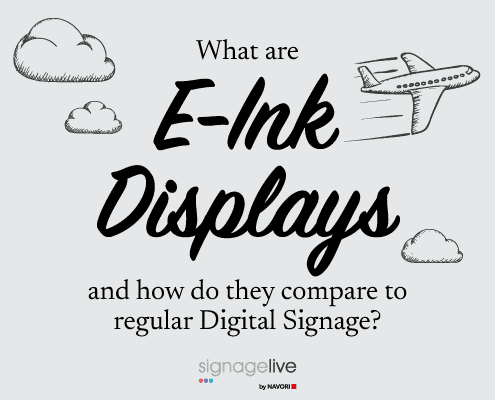Digital signage has become an indispensable tool for internal communications, but developing an effective content strategy can be a complex task. This guide will walk you through a structured, step-by-step approach to creating a comprehensive digital signage content plan that maximizes impact while minimizing effort. By following this process, you’ll be able to streamline your content management, ensure all departments’ needs are met, and create a clear workflow for ongoing updates.
Key Steps in Developing Your Digital Signage Content Strategy
1. Identify the Project Initiator
- Typically, the request for digital signage comes from marketing or executive leadership seeking to improve communication.
- Understanding the origin of the request helps align your strategy with the overall organizational goals.
2. Define Your Audience
- List all departments that will be impacted by or benefit from digital signage:
- Warehousing/Logistics
- IT/Admin
- Sales
- Marketing
- Human Resources
- Executive team
• Consider any additional departments specific to your organization.
3. Gather Content Requests
- Reach out to each department to understand their specific needs and desires for digital signage content.
- Conduct interviews or surveys to gather comprehensive information.
- Encourage departments to think beyond their immediate needs and consider long-term communication goals.
4. Categorize Content Types
Break down requested content into three categories:
- Automated: Content that can be set up once and updates automatically
- Examples: Data feeds, social media streams, weather updates
• Manual/Sporadic: Content requiring occasional updates - Examples: Event announcements, new product launches, policy changes
• One-time: Rarely changing content - Examples: Company mission statement, emergency procedures
5. Identify Content Channels
Group similar content requests into channels or playlists to streamline management:
- Company News
- Emergency Messaging
- Data Channel (metrics and analytics)
- Training and Development
- Social Media Feed
- Executive Communications
- HR Updates
6. Determine Content Distribution
- Decide which channels go to which screens and departments.
- Consider must-have content for all screens and department-specific requirements.
- Implement a tagging system to allow for granular control over content distribution.
7. Establish Content Management Workflow
- Assign responsibility for updating each channel.
- Determine update frequency for each content type.
- Create a content calendar to manage regular updates and special announcements.
Implementing Your Strategy
Content Creation and Curation
- Develop templates for frequently used content types to ensure consistency.
- Establish guidelines for visual design, messaging tone, and branding.
- Consider using AI-powered tools to assist in content creation and curation.
Leveraging Automation
- Integrate data feeds from internal systems to automate metrics displays.
- Use RSS feeds for news and social media updates.
- Implement scheduling features to ensure timely content rotation.
Measuring Effectiveness
- Set up key performance indicators (KPIs) to measure the impact of your digital signage.
- Regularly survey employees to gather feedback on content relevance and engagement.
- Use analytics tools to track viewer engagement and adjust content strategy accordingly.
Continuous Improvement
- Schedule regular reviews of your content strategy.
- Stay informed about new digital signage technologies and features.
- Encourage ongoing feedback from all departments to refine and improve your approach.
Benefits of This Structured Approach
By following this comprehensive process, you can:
- Reduce the perceived workload by identifying automated and one-time content.
- Streamline content management by grouping similar requests into channels.
- Ensure all departments’ needs are met while maintaining a cohesive strategy.
- Create a clear workflow for ongoing content updates and management.
- Improve content relevance and engagement across the organization.
- Maximize the return on investment for your digital signage system.
Overcoming Common Challenges
- Content Overload: Prioritize content based on organizational goals and viewer needs.
- Maintaining Freshness: Implement a content rotation schedule and regularly update evergreen content.
- Technical Limitations: Work closely with IT to ensure your content strategy aligns with system capabilities.
- Measuring ROI: Develop clear metrics tied to communication goals and regularly report on progress.
Implementing this strategy will help you make the most of your digital signage investment, improving internal communications without overwhelming your team. Remember, the key is to start with a comprehensive plan, remain flexible, and continuously refine your approach based on feedback and results.
By following this expanded guide, you’ll be well-equipped to create a dynamic, effective digital signage content strategy that serves your organization’s communication needs while maximizing efficiency and impact.





You must be logged in to post a comment.